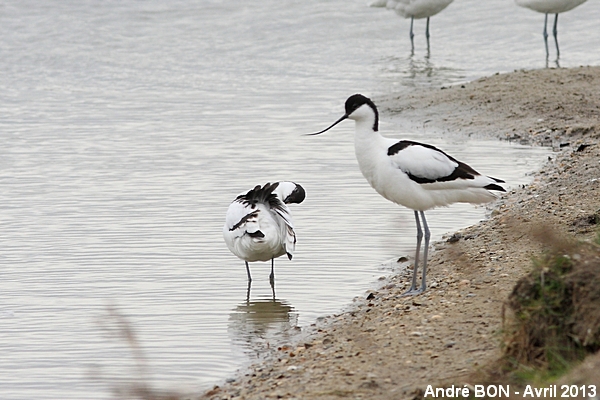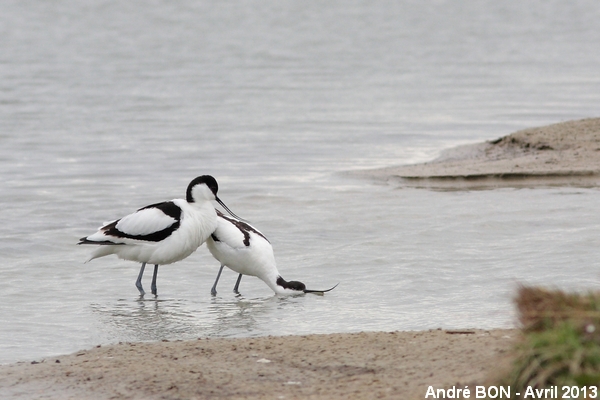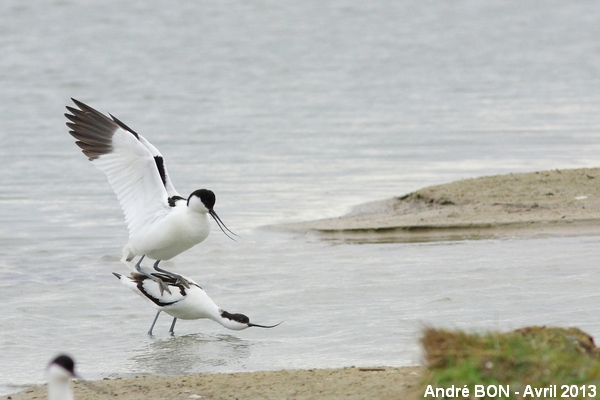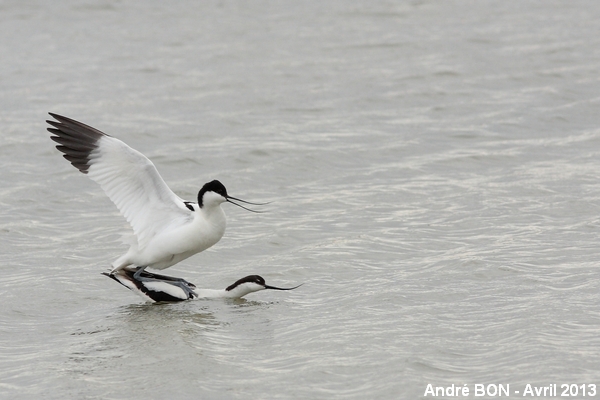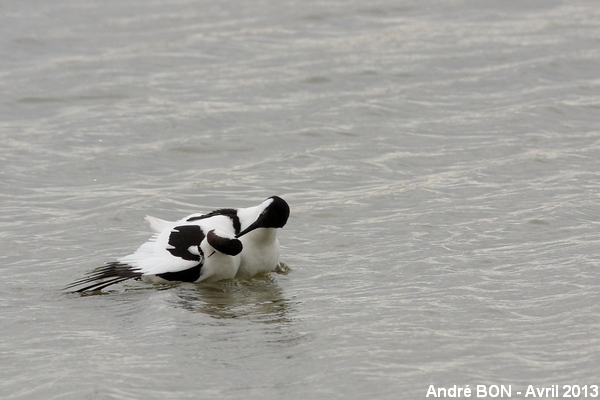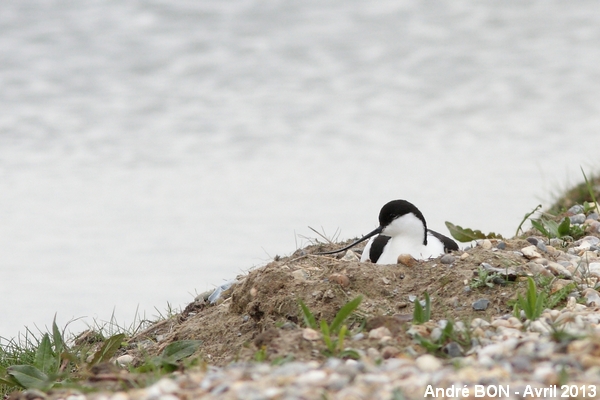Scientific name: Recurvirostra avosetta (Linnaeus, 1758)
Common name: Pied Avocet
French name: Avocette élégante
Order: Charadriiformes
Family: Recurvirostridae
Size: Body size: 42 to 45 cm; bill length: 75 to 93 mm; Weight: 250 to 400 g; Wingspan: 77 to 80 cm.
Habitat: Flat and open areas with shallow salty water, lagoons, estuaries, beaches, salty lakes.
Food: Pied Avocets pick their food in water by shaking their bill laterally from left to right. They mainly feed on water insects, worms and small crustaceans. They can also turn upside down, like ducks, when water is deeper.
Nesting: Pied Avocets often nest in dense colonies on sand beds or on grassy areas. The nest is a cup located on the ground in a small depression and lined with dry grasses. There are 3 to 4 eggs per clutch.
Migration: In winter, Pied Avocets move to western Europe, western Africa or the Middle-East. Asian populations move to north-western India or south-east China.
Geographic area: Temperate Europe and temperate Asia east to eastern China, North Africa and East Africa.
|
Pied Avocet are nice white and black birds with a thin black upwards curved bill, long pale grey blue legs and palmate feet.
The plumage is white with black areas extending on the forehead, the upper side of the head down to the bottom of the eyes, the nape and the backside of the neck, three stripes on the upper side of the wings matching the outer lesser coverts, the median coverts and the six first outer remiges with also the tip of the underside of the wings with the outer remiges again.
Both sexes are similar with a very slightly longer bill for males.
|












